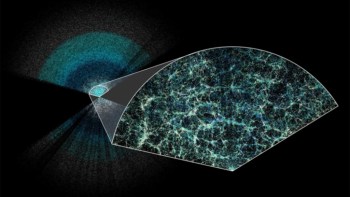Most astronomers believe that the universe is dominated by “dark energy” because it has been the only way to explain why the universe is expanding and accelerating at the same time. Now, however, physicists in the Netherlands and France are suggesting that this energy might not exist. They claim that the absence of dark energy could account for recent X-ray observations of the universe that have unearthed puzzling differences between ancient and present-day galaxy clusters (Astron. Astrophys. to be published and arxiv.org/abs/astro-ph/0311344)
In February, NASA unveiled the first detailed full sky map of the cosmic microwave background – the microwave “echo” of the big bang. The data, which were collected by the Wilkinson Microwave Anisotropy Probe satellite (WMAP), supported the currently popular “concordance model” of the universe. This model predicts that the universe is made up of 5% ordinary matter, 25% undetectable “dark matter”, and 70% dark energy. Although the nature of dark energy is not yet known, galaxies in a universe with such a low density of matter should have stopped growing early in the history of the universe. They should therefore appear the same today as they did then.
David Lumb and colleagues at the Space Research Technology Centre in the Netherlands (ESTEC) have now measured eight distant galaxy clusters using the European Space Agency’s X-ray observatory, XMM-Newton. These clusters – the furthest of which is about 10 billion light years away – provide a picture of the universe as it was around seven billion years ago. Lumb and co-workers surprisingly found that galaxy clusters in the distant universe emit more X-rays than those in the near universe.
Moreover, a second group of physicists, led by Alain Blanchard at the Observatoire Midi-Pyrénées have analysed the data to demonstrate that the universe is a high-density environment that contains more matter than commonly assumed (arxiv.org/abs/astro-ph/0311381). “To account for these results you have to have a lot of matter in the universe – and that leaves little room for dark energy,” said Blanchard. The data, if confirmed, could have important implications for the concordance model and other fundamental assumptions about the nature of the universe.



